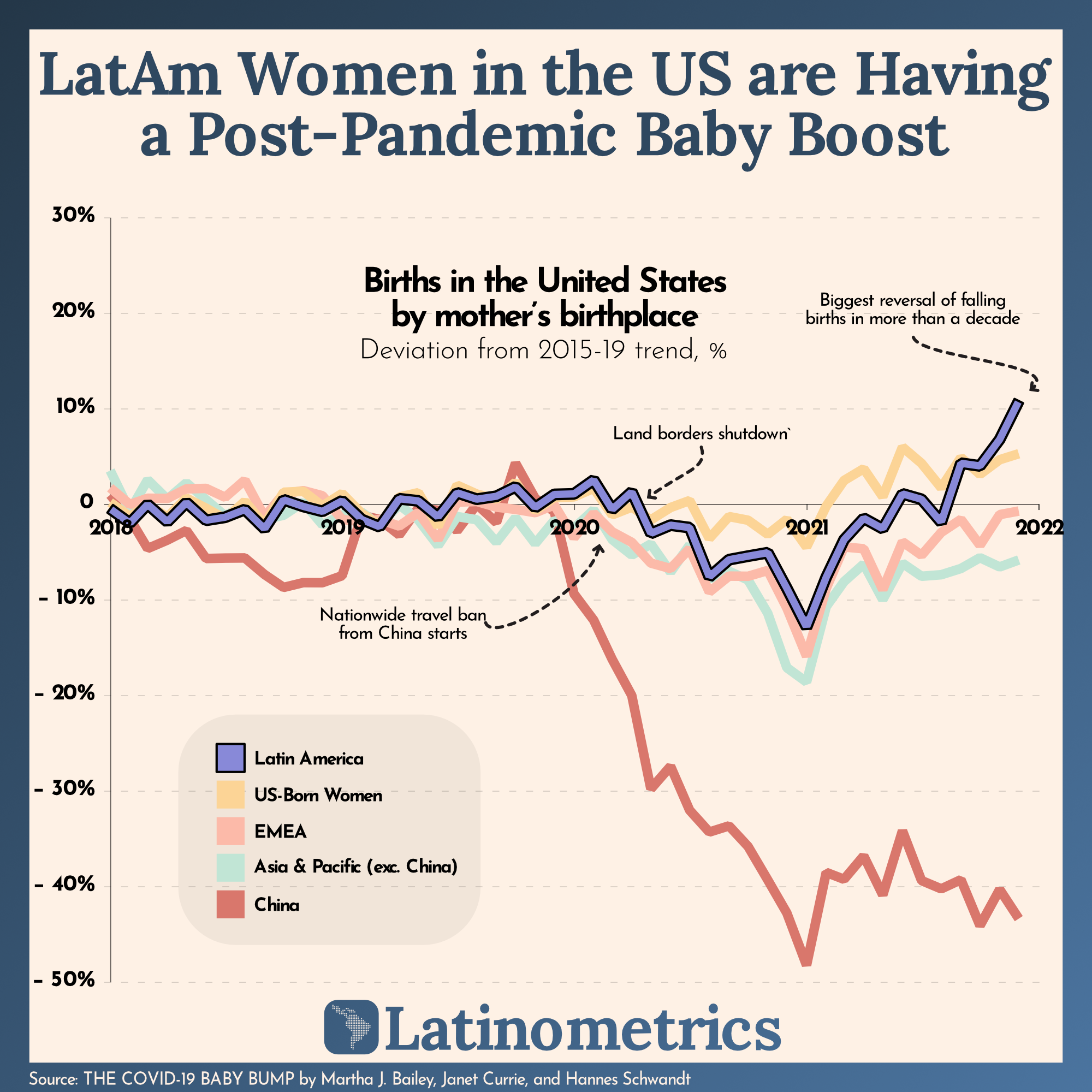Comments
SF_Niner t1_ivpble1 wrote
What does lockdowns in China have to do with Chinese women in the US having a drop in birth rates?
TA_faq43 t1_ivpc3t6 wrote
Yeah, I’m confused by separate US borne women line. Are these not Americans in US? Or is this by immigration status?
NobleCaptalist t1_ivpdy8w wrote
No graphs for India . Millions of desi newborns would feel left out.
[deleted] t1_ivq5tys wrote
[removed]
Golden_Mandala t1_ivqct3k wrote
Graph would be much better with labels, tic-marks on the horizontal axis.
Lacinl t1_ivqmuum wrote
There's not enough data to tell, but I know there were people complaining about Chinese women coming to the US to have a kid so that the kid can get dual citizenship.
Lacinl t1_ivqn1i7 wrote
From the information given, it's probably looking at all children born in the US, since they're US citizens, and then going back and seeing where their parents are from. It doesn't specify citizenship or resident status for the parents. This would count births from tourists and undocumented immigrants.
PadraigHPearse t1_ivqzgua wrote
The Birth Tourism industry still hasn't recovered.
[deleted] t1_ivsw3j4 wrote
[deleted]
Sketzell t1_ivuxyy9 wrote
For reals. 10%="Boom"

latinometrics OP t1_ivp5dkp wrote
Source: The COVID Baby Bump
Tools: Excel, Rawgraphs, Affinity Designer
Fertility rates — aka how many babies the average woman has — have been declining for decades. Data from the US showed, to the concern of many, that the downward trend accelerated during 2020.
But research by Martha Bailey, Janet Currie, and Hannes Schwandt, who looked at the data more closely (and kindly shared it with Latinometrics), explains the why behind the drop. Their work also revealed a surprising COVID aftermath in 2021.
During the pandemic, there was a drop in childbirths by Chinese women as the US shut down Chinese travel in early 2020. A few months later, as the Mexican border closed, a decline was seen in Latin American women's childbirth.
Keep in mind the 9-month pregnancy period; it tells us that this disruption was very likely due to women not being physically present in the US to give birth to their pre-conceived children. What's most surprising about the data the Economists presented is what starts happening in 2021. Latin American women (and also US-born women, to a lesser extent), for the first time in 15 years, reversed the trend of declining births.
By December 2021, the researchers observed an 11% positive deviation from the 2015-19 trend by Latin American women, proposing stimulus checks and increased remote work as potential explanations for the bump. What does this imply? Under the right conditions, many women are eager to become mothers.
Unbelievably for people in the Western Hemisphere, China continues to struggle with lockdowns; thus, births by Chinese women in the US are still well below the 2015-19 trendline.